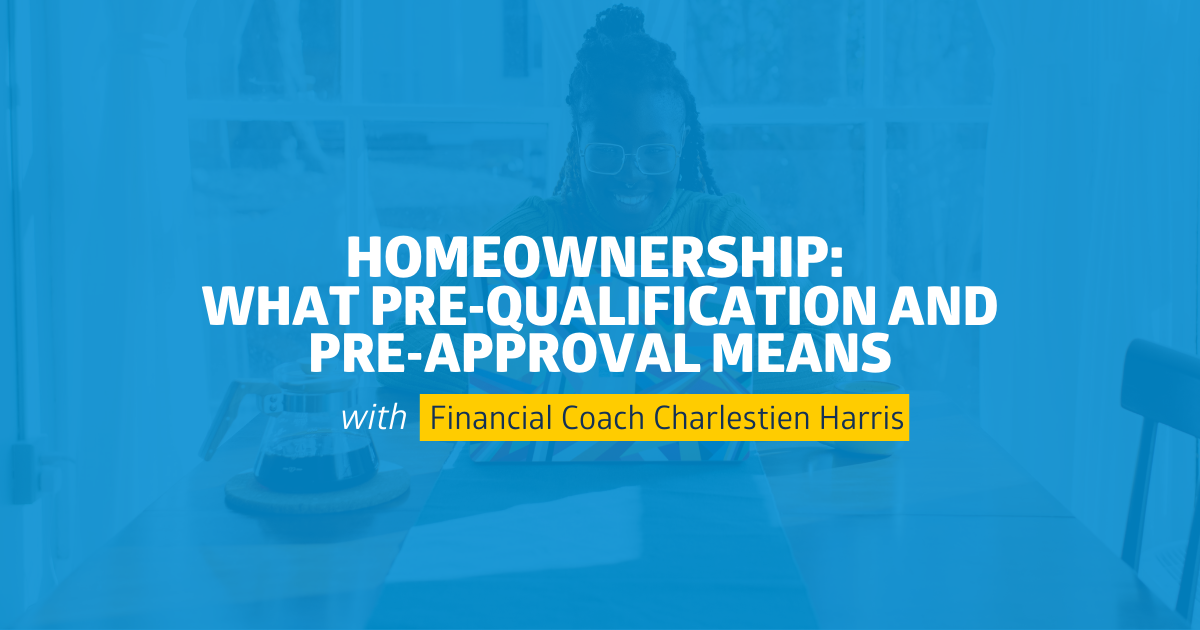By: Charlestien Harris
Realizing the American dream can be a tedious task sometimes, especially when trying to get financing for that new home you desire. But, before you begin searching for your dream home, you should know or have some idea of how much you will be able to borrow to purchase that home. Having an idea of how much money you may have to purchase a home will help you to stay within your budget and allow you to shop with confidence.
Pre-qualification is one of the methods used to figure out how much you may be able to borrow to purchase a home. A lender will ask for certain financial information to calculate that figure. This information is provided by the potential customer verbally and is usually unverified. These figures are just an estimate and not a guaranteed loan amount. The lender will also obtain a copy of your credit report and mostly likely discuss it with you. If the information you provided is not accurate, or if your financial situation changes before you are ready to purchase, the lender may not be willing to lend you the amount listed in the letter.
Tip: You are not obligated to get your loan from the lender that pre-qualifies you.
After making some calculations using the housing affordability ratios, the lender will determine the following:
- How much money the lender would probably be willing to loan you
- What price range you can shop for
- How much down payment you may need
- How much your monthly payments might be
This information is usually provided in a letter or a certificate that the potential customer can show to a Realtor, who will assist them in searching for homes that fall within that price range. The actual amount you may be able to borrow for a home can vary by the type of loan, current interest rates, and the house you buy.
Pre-approval is another method used to figure out how much home you can afford. Pre-approval uses verified financial information supplied by the customer and requires additional documentation such as tax returns, bank statements, W-2s, and pay stubs.
Tip: One advantage of a pre-approval is that you get a letter with the actual amount the lender is willing to finance based on the verified documentation you provided.
This information is the same information used to complete the loan application and can be used to make a legitimate offer on a house. If you are pre-approved, you may have a guarantee that the lender will lend you the stated amount in the letter – as long as you buy the house within a certain time period, and the house appraises at the amount for which you are pre-approved.
Tip: Usually, by having been pre-approved, you can often close on the sale more quickly.
One negative aspect of the pre-approval process could be the fact that some lenders may charge a fee for this service. If you don’t meet the time deadline or you decide to go with another lender, you could lose the fee amount you paid to get pre-approved. Before you get pre-approved, you should always shop around for the right lender and make sure that the offer fits your needs as you look for the right home.
A lot goes into determining how much house you can afford, and a lender is in business to lend money. The ratios lenders use to calculate the amount you can borrow are for the maximum amount you can afford for housing, and are based on your gross income. But remember: Your take-home pay is less than that because of deductions, and those ratios don’t include other monthly expenses such as utilities, food, clothing, and other categories. This is why pre-approval is so helpful when shopping for a home because it helps you to stay within the bounds of your income limits, and it helps you to understand why budgeting is so important when making the decision to purchase a home.
Remember – every lender handles mortgage approvals differently. The steps and documentation required varies from lender to lender. Both pre-qualification and pre-approval are methods that are used to provide the borrower with an estimation of how much home they can afford. Understanding the difference between pre-qualification and pre-approval can be the difference between purchasing your dream home or falling in love with a home only to find out you can’t afford to finance it.
If you need additional information on this topic or other financial topics please call me at 662-624-5776, or email me at Charlestien.harris@southernpartners.org.
Until next week — stay financially fit!
